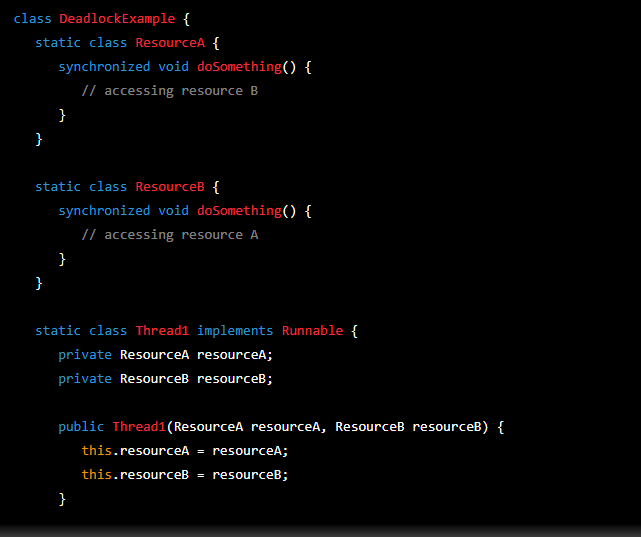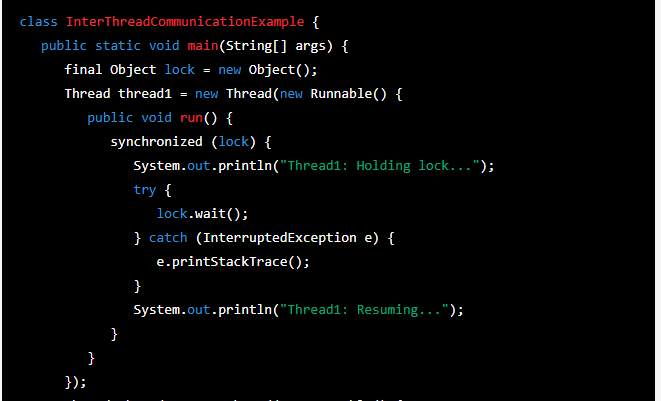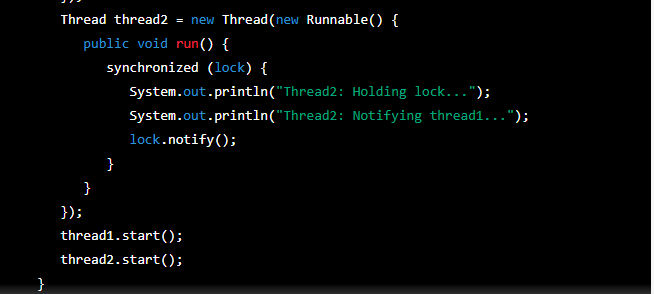In computer science, a deadlock is a state in which two or more processes are unable to proceed because each is waiting for the other to finish. In Java, a deadlock can occur when two or more threads have a circular dependency on each other, where each thread is waiting for a resource that is held by another thread. This results in a situation where none of the threads can make progress, and the system is stuck in a permanent waiting state.
Deadlocks can occur in Java when multiple threads access shared resources in a non-synchronized manner, which leads to a race condition where the threads try to lock the same resources simultaneously. To prevent deadlocks, it’s important to follow proper synchronization techniques, such as using the synchronized keyword or lock objects to ensure that only one thread can access a shared resource at a time.
Here’s a simple example of how a deadlock can occur in Java:

java online course in coimbatore will help students to understand the object-oriented programming in a better way. They will get an understanding of how to write a program using Java. The course also includes a session on how to debug programs written in Java.
Inter-Thread communication in java
Inter-thread communication in Java refers to the mechanism by which two or more threads can communicate and coordinate with each other. There are several ways to achieve inter-thread communication in Java, including:
- wait() and notify(): The
wait()andnotify()methods are defined in the Object class and are used to implement inter-thread communication in Java. Thewait()method is called by a thread to cause it to wait for a notification from another thread, and thenotify()method is called by another thread to notify a waiting thread that it can proceed. - join(): The
join()method is used to wait for a thread to finish before proceeding with the next operation. Thejoin()method can be called on a thread object, causing the calling thread to wait until the specified thread has completed. - synchronized blocks: The
synchronizedkeyword can be used to create a synchronized block of code that can be executed by only one thread at a time. Synchronized blocks are used to enforce mutual exclusion, which means that only one thread can access the shared resource at a time. - BlockingQueue: A
BlockingQueueis a type of queue that blocks the producer thread if the queue is full and blocks the consumer thread if the queue is empty. This type of queue is useful for inter-thread communication because it allows the producer and consumer threads to communicate without the need for additional synchronization mechanisms. - Semaphore: A
Semaphoreis a synchronization mechanism that can be used to control access to a shared resource. Semaphores can be used to enforce mutual exclusion, to ensure that only one thread can access the shared resource at a time, and to limit the number of threads that can access the shared resource simultaneously.
Here’s a simple example of inter-thread communication using the wait() and notify() methods:



